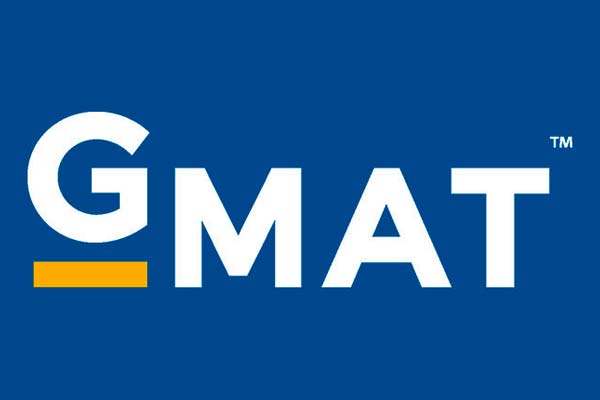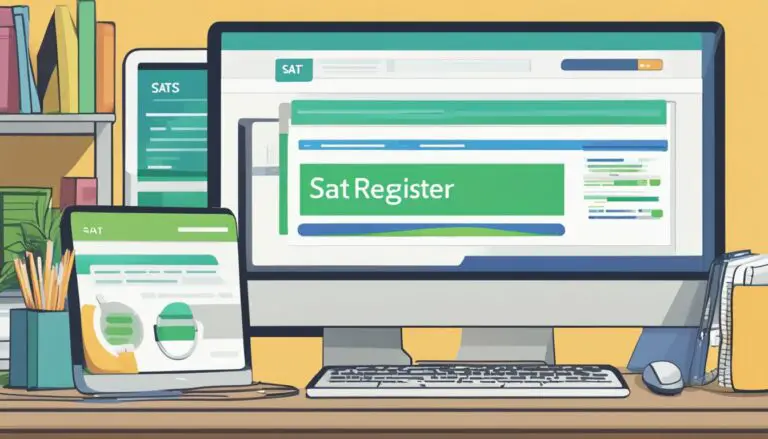How Hard is the GMAT? Expert Analysis and Insights
The GMAT is a standardized test business schools use to evaluate applicants. The test measures a student’s analytical, quantitative, verbal, and reading skills. Many prospective business school students ask how hard the GMAT is and if it is a difficult exam.
The GMAT is a challenging exam. Only 6% of test-takers score 720 or above; the average overall score is 561.27 out of 800. The exam takes about three hours to complete, and test day usually takes 3.5 hours or more if you factor in break time, sign in, and receive your unofficial score report.
The GMAT is an adaptive test, meaning that the difficulty of the questions increases as the student answers correctly, and the student cannot go back to previous questions.
Understanding the GMAT
The GMAT is a standardized computer-based test designed to assess a person’s abilities in analytical writing, integrated reasoning, quantitative reasoning, and verbal reasoning. It is developed and managed by the Graduate Management Admission Council (GMAC).
The GMAT is a widely recognized standardized test used by many business schools and other graduate management programs as part of their admissions process. It is taken by over 200,000 test-takers every year and is accepted by more than 7,000 programs worldwide.
The exam is divided into four sections, each designed to test specific skills. The sections are:
- Analytical Writing Assessment (AWA): This section requires test-takers to analyze an argument and write an essay that critiques the argument.
- Integrated Reasoning (IR): This section assesses your ability to examine and combine information from sources like text, tables, and graphs.
- Quantitative Reasoning (QR): This section measures the ability to analyze and solve quantitative problems using basic arithmetic, algebra, and geometry.
- Verbal Reasoning (VR): This section tests your comprehension of written text, analyzing arguments, and editing written content to adhere to standard English rules.
The GMAT is a computer-adaptive test. This means the questions get easier or harder depending on how well you do. It tailors itself to your skill level.
Integrated Reasoning
The Integrated Reasoning section assesses a test-taker’s ability to analyze data and information from multiple sources. This section consists of 12 questions and has a duration of 30 minutes.
The questions in this section are of four types: multi-source reasoning, table analysis, two-part analysis, and graphics interpretation.
Quantitative and Verbal Sections
The test has two main parts: Quantitative and Verbal. The Quantitative section evaluates quantitative reasoning, with 31 multiple-choice questions to answer in 62 minutes. The Verbal section assesses understanding of written material, with 36 multiple-choice questions to answer in 65 minutes.
Analytical Writing Assessment
The Analytical Writing Assessment section assesses a test-taker’s ability to analyze an argument and communicate ideas effectively in writing. This section consists of one essay topic and lasts 30 minutes.
🌟 Hey Students! 🚀 Ready for the ultimate experience? Join us on Studentsinside.com's Facebook, YouTube, WhatsApp, and LinkedIn. Click now for tips, fun, and success vibes! 🌈✨ #StudentLife #JoinUs
Test Format
The GMAT is a computer-adaptive exam that evaluates individuals in different skill areas. It consists of four sections: Integrated Reasoning, Quantitative, Verbal, and Analytical Writing Assessment. The test lasts 3.5 hours.
In the GMAT, questions adjust to the test-taker’s skill. Initial performance shapes the difficulty of later questions. Skipping or revisiting previous questions isn’t allowed.
GMAT Scoring System
The GMAT, a standardized test for business school admissions, is scored from 200 to 800 in 10-point increments.
Your score is determined by correct answers, question difficulty, and response count across four sections: Analytical Writing (0 to 6), Integrated Reasoning (1 to 8), Quantitative (0 to 60), and Verbal (0 to 60).
The Analytical Writing Assessment (AWA) rates essays on a 0 to 6 scale, evaluating argument analysis, organization, and language. AWA doesn’t factor into the total score but is shared with schools.
The scores for Integrated Reasoning (IR) span from 1 to 8. These scores gauge abilities in merging data, tackling intricate problems, and assessing information.
Quantitative and Verbal sections are each scored 0 to 60, then combined for a 200 to 800 total. Quantitative measures reasoning, problem-solving, and data interpretation. Verbal assesses reading comprehension, critical reasoning, and argument evaluation.
Business schools weigh GMAT scores, work experience, GPA, and recommendations. A strong GMAT score stands out in competitive applications.
A GMAT score includes a percentile rank, showing the percentage of lower-scoring test-takers. For instance, a 90th percentile means scoring better than 90% of others. 50th percentile means surpassing half. This rank gauges competitiveness and relative performance.
GMAT Preparation
Preparing for the GMAT requires a significant amount of time and effort. Test takers should plan to spend at least three months studying for the exam and, ideally, six months or more if possible. Here are some tips on how to prepare for the GMAT:
Create a Study Plan
Test takers should create a study plan that includes regular practice tests and study sessions. It is essential to set realistic goals and track progress over time. A study plan should also have time for reviewing incorrect answers and understanding why they were wrong.
Utilize Resources
There are many resources available to help test takers prepare for the GMAT. These include study guides, practice tests, online courses, and private tutors. Test takers should choose the best resources for them and their learning style.
Practice Time Management
Time management is crucial in the GMAT. Test takers should practice pacing themselves during practice tests and improve their speed and accuracy. Taking advantage of the optional breaks to rest and recharge is also essential.
Focus on Weaknesses
Test takers should focus on improving their weaknesses, whether it be in the Quantitative or Verbal section. It is crucial to identify areas of weakness early on and work on improving them over time.
By following these tips, test takers can prepare themselves for the GMAT and increase their chances of achieving a high score.
Critical Skills Required for GMAT
To perform well on the GMAT, test-takers need to possess various skills. Here are some of the critical skills required to succeed on the GMAT:
Analytical Skills
The GMAT is designed to test a test-taker’s analytical skills. Test-takers must be able to analyze and interpret complex data, identify patterns, and draw logical conclusions. They must also be able to evaluate arguments and identify flaws in reasoning.
Quantitative Skills
The GMAT includes a quantitative section that tests a test-taker’s ability to solve mathematical problems. Test-takers must be able to solve problems involving arithmetic, algebra, geometry, and data analysis. They must also be able to interpret graphs and charts.
Verbal Skills
In addition, the GMAT features a verbal section designed to assess a test-taker’s skills in comprehending written content, analyzing arguments, and rectifying grammar and syntax errors. This part of the test requires the ability to grasp intricate passages, pinpoint the text’s primary message, discern its tone, and recognize its purpose.
Time Management Skills
The GMAT is a test with a specific time limit. Test-takers need to handle their time well to finish all sections on time. They should also know how to decide which questions to focus on and how much time to spend on each, considering how hard they are.
Test-Taking Strategies
Finally, test-takers must have good test-taking strategies to succeed on the GMAT. They must eliminate incorrect answers, make educated guesses, and avoid common test-taking pitfalls such as rushing through questions or second-guessing themselves.
Performance on Test Day
Test day can be a daunting experience for many test-takers, and the GMAT is no exception. Being mentally and physically prepared to perform at your best is crucial. The following tips can help you optimize your performance on test day:
- Ensure you have a restful sleep the night before the test. Insufficient sleep can harm your thinking abilities and detrimentally affect your performance.
- Eat a healthy breakfast on test day. A balanced meal provides the energy and focus needed to perform well.
- Arrive at the test center early to allow check-in time and get settled before the test begins.
- Take advantage of the optional breaks to rest and recharge. It is recommended to take at least one break during the test.
- Remember to drink enough water during the test. Not staying hydrated can make you feel tired and reduce your thinking ability.
- Stay calm and focused during the test. If you feel anxious or overwhelmed, take a deep breath and refocus on the task.
- Manage your time effectively. The GMAT is a timed test, so you must pace yourself and ensure you have enough time to complete each section.
By following these tips, test-takers can optimize their performance on test day and increase their chances of achieving their desired GMAT score.
The GMAT and Business Schools
The GMAT is a standardized test business schools use to assess applicants’ readiness for graduate-level management programs.
While not the only factor considered in the admissions process, a high GMAT score can significantly improve an applicant’s chances of acceptance into a prestigious business school.
Business schools use the GMAT to evaluate applicants’ critical thinking, analytical writing, problem-solving, and data analysis abilities.
These skills are essential for success in a graduate-level management program and business in general. Thus, a high GMAT score can demonstrate to admissions committees that applicants have the skills to succeed in a rigorous academic environment.
Business schools typically set minimum GMAT score requirements for admission. While these requirements vary by school, they generally fall within the range of 500 to 700. However, it is essential to note that meeting the minimum score requirement does not guarantee admission.
Admission committees consider various aspects of applicants, including their academic performance, work background, and extracurricular involvement.
Additionally, numerous business schools utilize GMAT scores to grant scholarships and financial assistance. A strong GMAT score can enhance the likelihood of obtaining such aid, substantially reducing business school expenses.
Challenges for Non-Native English Speakers
The GMAT exam is typically used for admissions to American universities and is conducted only in English. Therefore, non-native English speakers may need help with taking the exam. Here are some factors that could make the GMAT more challenging for non-native English speakers:
- Language Barrier: The biggest challenge for non-native English speakers is the language barrier. The GMAT verbal section tests a candidate’s ability to read and understand complex passages, analyze arguments, and identify errors in written material. Non-native English speakers may need help with the nuances of the English language, such as idioms, phrasal verbs, and colloquial expressions.
- Vocabulary: The GMAT verbal section requires a strong vocabulary to understand and analyze the passages. Non-native English speakers may need to be more familiar with all the words used in the passages, which could affect their ability to comprehend the meaning of the text.
- Reading Speed: The GMAT verbal section is timed, and candidates are expected to read and answer the questions within a stipulated time. Non-native English speakers may take longer to read the passages, affecting their ability to answer all the questions within the given time.
- Grammar and Syntax: The GMAT verbal section tests a candidate’s English grammar and syntax knowledge. Non-native English speakers may need help with English grammar rules, such as subject-verb agreement, verb tense, and sentence structure.
To overcome these challenges, non-native English speakers should improve their English language skills. They can practice reading English passages, learning new vocabulary words, and taking timed practice tests to improve their reading speed. They can also work on their grammar and syntax by studying English grammar books and taking online courses.
In addition, non-native English speakers can use various GMAT preparation resources that are specifically designed for them. These resources provide tips and strategies to help non-native English speakers improve their performance on the GMAT exam.
GMAT vs. Other Tests
When it comes to graduate entrance exams, the GMAT is often considered to be one of the more difficult tests. However, how does it compare to other tests? Let’s take a closer look.
GRE
The Graduate Record Exam (GRE) is another popular graduate entrance exam. While the GRE and GMAT test verbal and quantitative reasoning skills, some key differences exist. For example, the GRE includes a writing section, while the GMAT does not.
Additionally, the types of questions on each test differ. The GRE includes more vocabulary-based questions, while the GMAT focuses on critical reasoning and data analysis. Overall, the difficulty level of the two tests is similar.
LSAT
Those interested in law school often take the Law School Admission Test (LSAT). While the LSAT and GMAT are different in terms of content, they are similar in terms of difficulty. Both tests require strong critical thinking skills and the ability to analyze complex information.
MCAT
The Medical College Admission Test is taken by those interested in attending medical school. While the MCAT and GMAT are very different tests, they both require a strong foundation in math and science. However, the MCAT is often considered more difficult due to the material the test covers.
Conclusion
In conclusion, the GMAT is a tough test demanding thorough preparation and commitment for a strong score. The test adapts based on each taker’s performance, but this only sometimes makes it easier or harder.
Factors like stamina, time management, and familiarity with the format influence performance in the GMAT. Yet, practice can enhance skills in information quantification, verbal reasoning, and critical thinking – the core GMAT areas.
Test-takers should recognize their strengths and weaknesses, creating a personalized study plan. This might involve mock tests, tutoring, or online resources.
Ultimately, the GMAT’s challenge varies per individual and readiness. Still, the right mindset and approach can lead to a high score and admission to prestigious global business programs.








